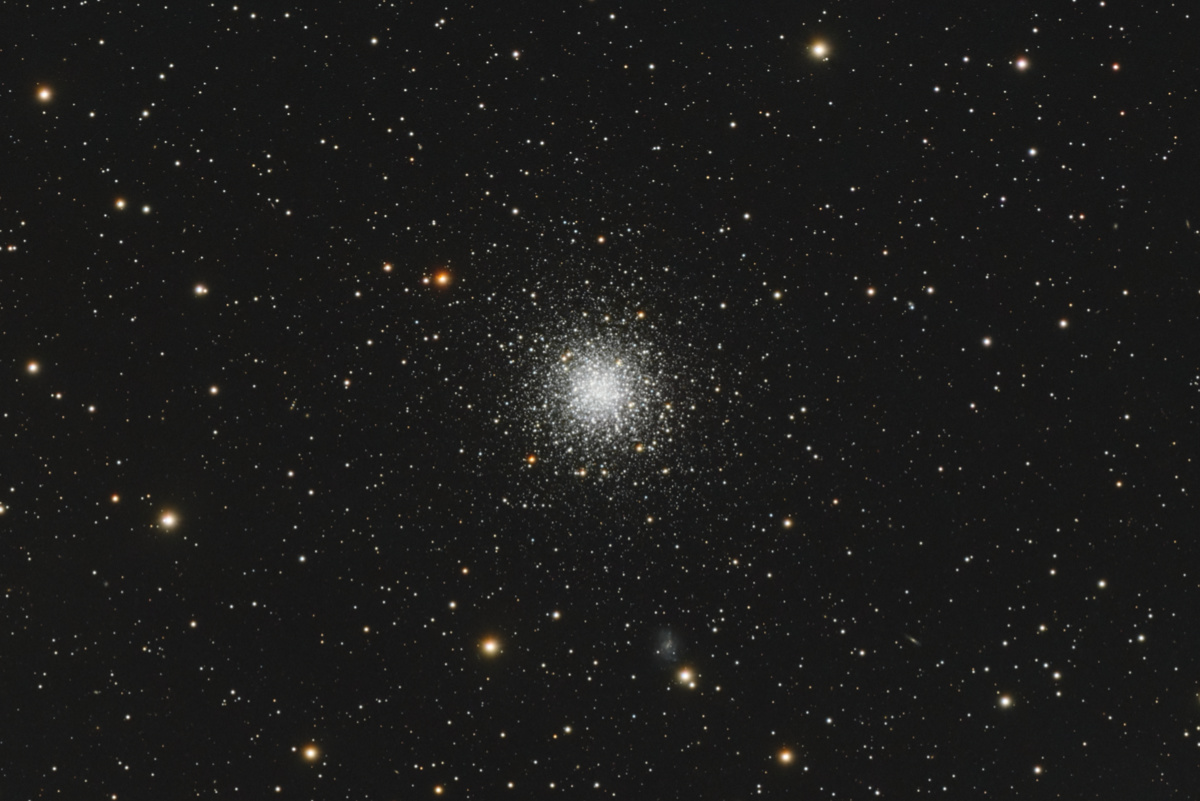
[back] M 68 (wide field) in Hydra [NED]
Higher resolved uncroped image /
höher aufgelöstes unbeschnittenes Bild (9481 x 6248 Pixel)
Annotated
uncroped image (9481 x 6248 Pixel)

|
Concentration Class X. |
|
5' |
|
(c) 2024 All astro photo images are copyrighted. They may not be used or reproduced without explicit written permission from the authors.
About this Image / Über dieses Bild
| Camera: | Moravian C3-PRO-61000 Mono CMOS |
| Image Type, Orientation: | L-RGB Color Composite, North is at 12:00 |
| Exposure time: | L: 32*300 sec., R,G: 12*300 sec. each, B: 10*300 sec. (5:30h total) |
| Exposure date: | June 1st...5th, 2024 |
| Location: | Capella Observatory South at Kiripotib Astro Farm, Namibia |
| Filter: | Astronomik Deep-Sky Deep-Sky RGB Filter on Moravian EFW-3L-9-II External Filter Wheel |
| Instrument: | "Callisto", a Takahashi FSQ 106N, 530mm focal length, 106mm aperture, f/5 on modified Losmandy G11 (high res encoders with OnStepX) |
| Photographer: | Rainer Raupach, Josef Pöpsel, Frank Sackenheim |
|
Remarks: |
Messier 68 is a
globular cluster in the constellation of Hydra. It orbits the Milky Way on a
highly elliptical path with an eccentricity of 0.5, and is one of the most
metal-poor known globular clusters, meaning it practically contains only
hydrogen and helium. Its age is estimated to be 11.2 billion years. |
|
Bemerkungen: |
Messier 68 ist ein Kugelsternhaufen im Sternbild Hydra
(Wasserschlange). Er umrundet die Milchstraße auf einer relativ stark
elliptischen Bahn mit Exzentrizität 0.5 und ist einer der metallärmsten
bekannten Kugelsternhaufen, d.h. enthält praktisch nur Wasserstoff und
Helium. Das Alter wird auf 11.2 Milliarden Jahre geschätzt. |
Back to the Globular Clusters Overview / Zurück zur Kugelsternhaufen-Übersichtsseite